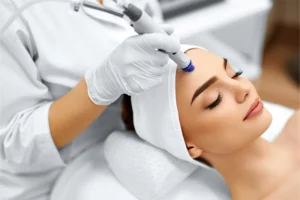Beauty
Skin Care
Welcome to the skin care section dedicated to celebrating the art of self-care and enhancing your natural beauty. Here, we invite you to embark on a journey of self-discovery, where self-expression meets self-love. Unlock the secrets to achieving a healthy, radiant complexion through our expertly curated collection of skincare tips, tricks, and product recommendations. Discover the power of nourishing ingredients and personalized routines tailored to your unique skin type, helping you cultivate a glow that comes from within.

The Top 10 Tips for Healthy Winter Skin
Cold, dry air can leave your skin itchy, red, and irritated. Combat dry winter skin with these expert tips for retaining your skin’s natural moisture.
Winter can wreak havoc on your skin, and it can feel like there’s no escape: Cold, blustery conditions outside leave your skin red and raw, while indoor heat zaps moisture from the air and from your skin.
Even the things that make winter wonderful, such as sitting by a roaring fire, can dry your skin, as the American Academy of Dermatology (AAD) notes. And although a hot shower can warm you up, hot water strips skin of its natural oils, according to the University of Tennessee Medical Center.
Happily, there are many ways to combat the causes of dry skin and keep yourself moist and supple all season long, including some easy changes to your everyday routine.
Read on for 10 simple, dermatologist-approved tips for glowing winter skin. (Read more at EveryDayHealth.com)

We Asked Top Dermatologists to Share Their Skin-Care Routines—Plus, the Products They Actually Use
Discovering the best skin-care routine is a never-ending task. It seems that whenever you find one that works, there’s suddenly a new concern to tackle. Even those with years of experience will share that the journey to clear and glowing skin was not without a bit of trial and error. (Read more at Vogue.com)
What Causes Vitiligo?
Vitiligo is a skin condition that causes loss of skin pigmentation in areas around the body. The lightened lesions are called macules (if they’re smaller than 1 centimeter in width) or patches (if they’re larger than a centimeter). Macules or patches appear when melanocytes, the cells that produce melanin, die or stop functioning. Melanin is a natural pigment that gives the skin, hair, and eyes their color and protects the skin from the sun’s ultraviolet (UV) rays. (Read more at Health.com)


